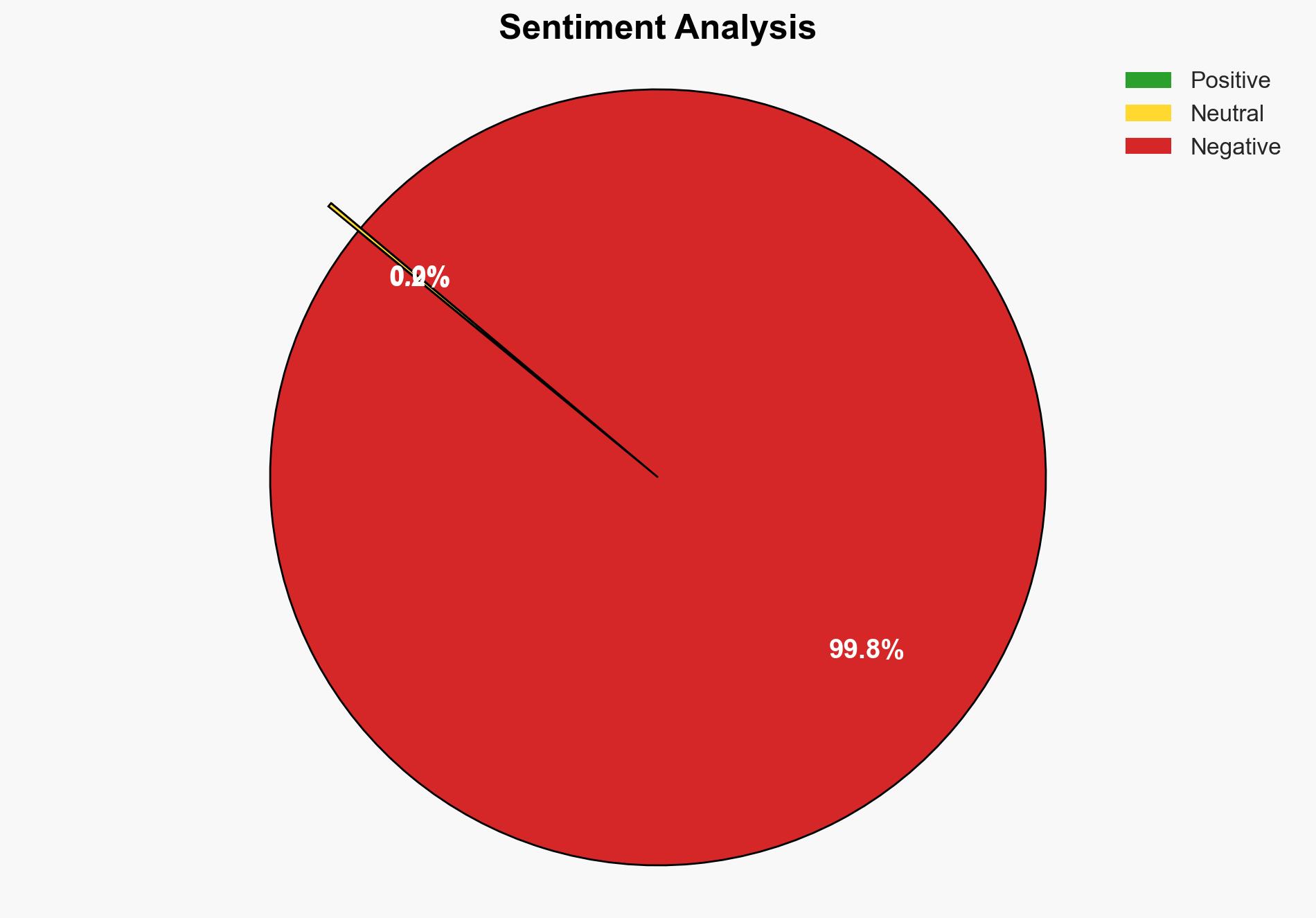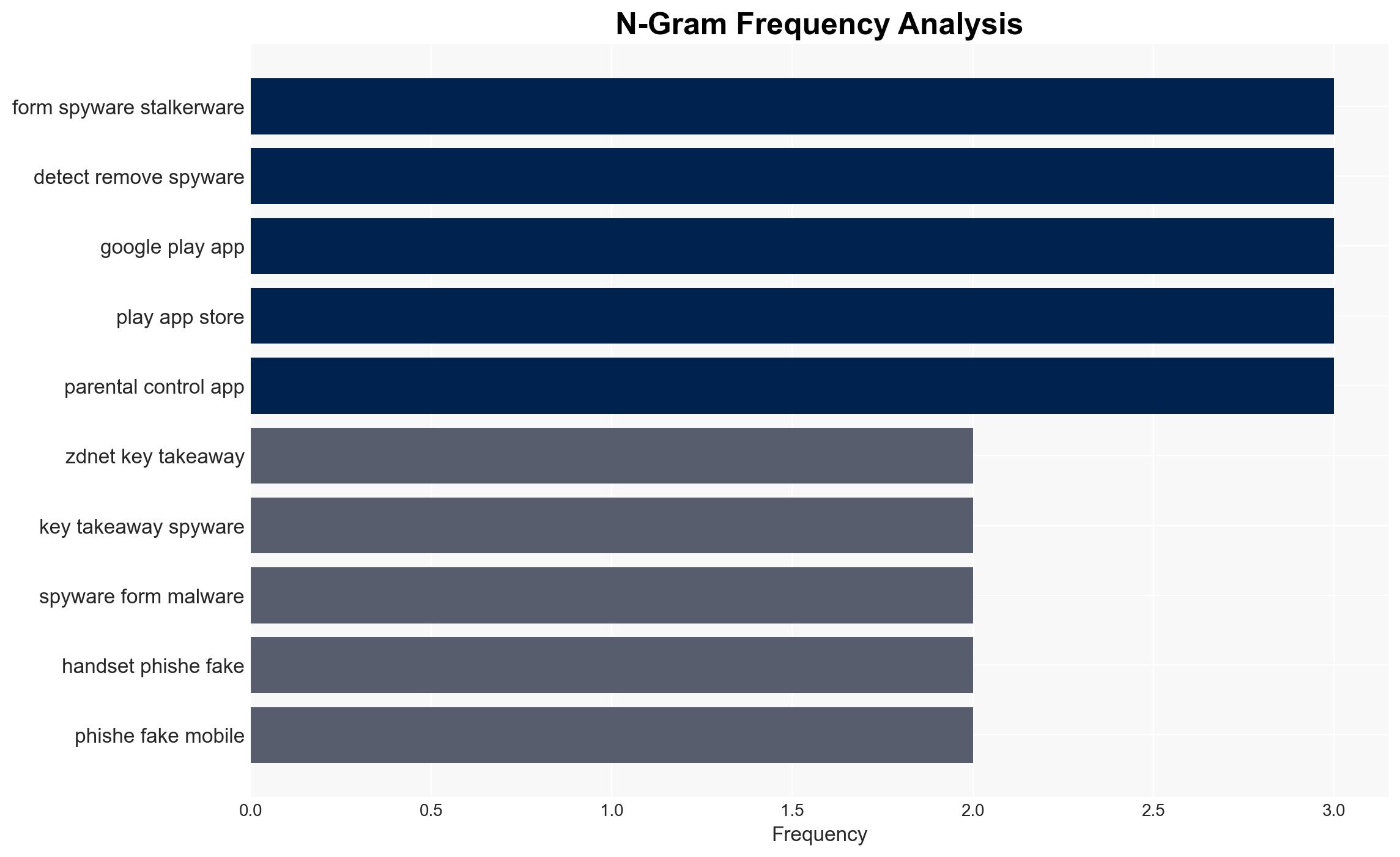Is spyware hiding on your phone The telltale signs to find out and how to remove it fast
Published on: 2025-11-25
AI-powered OSINT brief from verified open sources. Automated NLP signal extraction with human verification. See our Methodology and Why WorldWideWatchers.
Intelligence Report:
1. BLUF (Bottom Line Up Front)
With a moderate confidence level, the most supported hypothesis is that spyware on smartphones is primarily distributed through deceptive means such as phishing and malicious apps, posing significant privacy and security risks to individuals. Recommended actions include enhancing public awareness on identifying spyware signs and promoting the use of robust cybersecurity tools.
2. Competing Hypotheses
Hypothesis 1: Spyware is primarily distributed through deceptive phishing tactics and malicious applications, targeting individuals indiscriminately.
Hypothesis 2: Spyware is predominantly installed through targeted attacks, focusing on high-value individuals such as journalists, activists, and political dissidents using advanced tools like Pegasus.
Hypothesis 1 is more likely due to the widespread nature of phishing attacks and the prevalence of malicious apps affecting a broad user base. Hypothesis 2, while valid, pertains to a smaller, more specific group and involves higher costs and sophisticated operations.
3. Key Assumptions and Red Flags
Assumptions: It is assumed that most smartphone users lack advanced cybersecurity knowledge, making them susceptible to spyware. Another assumption is that spyware developers continuously evolve tactics to bypass security measures.
Red Flags: The potential for misinformation regarding spyware capabilities and the underreporting of spyware incidents due to user embarrassment or lack of awareness.
Deception Indicators: Legitimate apps being used as trojan horses for spyware, and phishing messages disguised as communications from trusted entities.
4. Implications and Strategic Risks
The proliferation of spyware poses significant risks, including personal data breaches, identity theft, and unauthorized surveillance. Politically, spyware can be used to suppress dissent and infringe on privacy rights. Economically, it can lead to financial losses for individuals and businesses. Cyber threats may escalate as spyware becomes more sophisticated, potentially leading to widespread distrust in digital communications.
5. Recommendations and Outlook
- Promote public education campaigns on identifying and mitigating spyware threats.
- Encourage the development and adoption of advanced cybersecurity tools and practices.
- Strengthen regulations and enforcement against the distribution of spyware.
- Best-case scenario: Increased awareness and improved cybersecurity measures significantly reduce spyware incidents.
- Worst-case scenario: Spyware becomes more sophisticated, leading to widespread data breaches and erosion of trust in digital platforms.
- Most-likely scenario: Incremental improvements in cybersecurity awareness and technology mitigate some, but not all, spyware threats.
6. Key Individuals and Entities
No specific individuals are identified in the source text. Entities of interest include cybersecurity firms, government agencies, and spyware developers.
7. Thematic Tags
Cybersecurity, Privacy, Phishing, Malware, Digital Surveillance
Structured Analytic Techniques Applied
- Adversarial Threat Simulation: Model and simulate actions of cyber adversaries to anticipate vulnerabilities and improve resilience.
- Indicators Development: Detect and monitor behavioral or technical anomalies across systems for early threat detection.
- Bayesian Scenario Modeling: Quantify uncertainty and predict cyberattack pathways using probabilistic inference.
- Network Influence Mapping: Map influence relationships to assess actor impact.
Explore more:
Cybersecurity Briefs ·
Daily Summary ·
Support us





